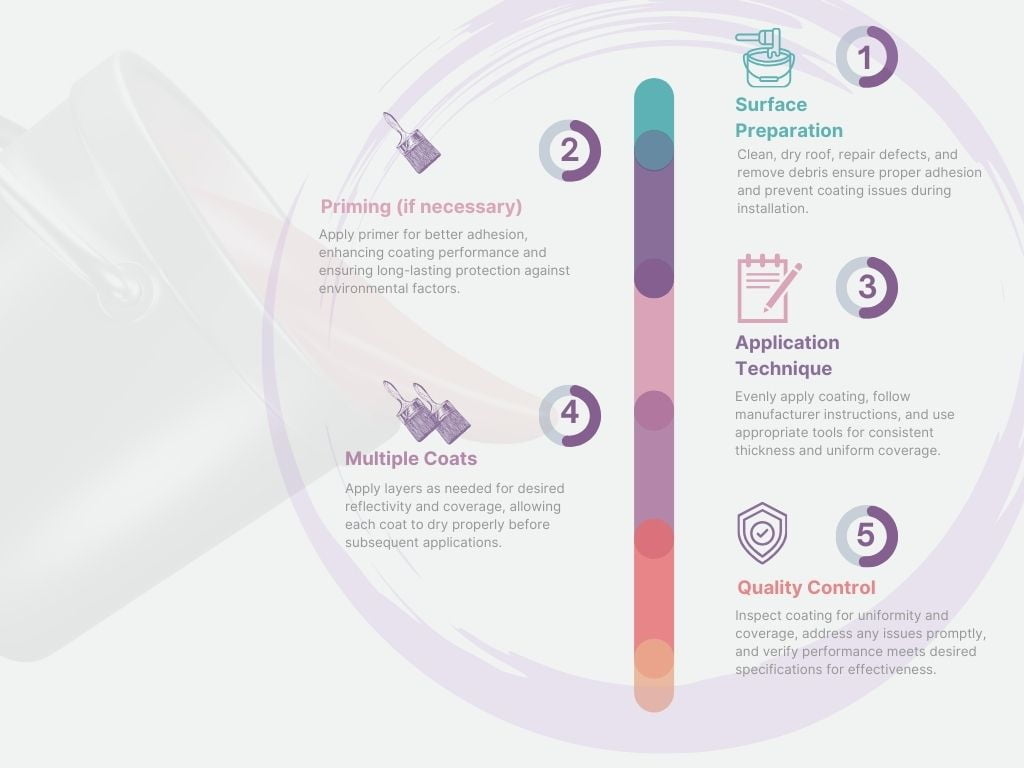Urban Front
all about of roof coatings and paints
Paints and roof coatings are not merely aesthetic enhancements but essential components of building maintenance and preservation. Their ability to protect against environmental elements, enhance durability, improve energy efficiency, and contribute to sustainable practices underscores their significance in the construction industry.
This article delves into the importance of paints and roof coatings, highlighting their essential roles in preserving infrastructure and contributing to sustainable practices.

1. Introduction
Roof coatings and paints have become increasingly popular as a way to extend the lifespan of roofs, reduce energy costs, and increase overall sustainability. With a variety of coating and paint options available on the market, building owners and homeowners have the ability to choose the best product for their specific needs.
Understanding the differences between coating and paint, as well as the benefits of various options, is crucial for making an informed decision. This article provides an overview of the different types of roof coatings and paints available, their properties, and their respective advantages and disadvantages.
2. The Rising Popularity of Roof Coatings in Sustainable Building Design
Roof coatings are gaining popularity among building owners and designers as a sustainable solution to reduce energy consumption, mitigate urban heat island effects, and increase the lifespan of roofs. According to the U.S. Department of Energy, cool roofs, which include white roof coatings, can reduce a building’s energy use by up to 20% in hot and sunny weather. Additionally, a study by the National Renewable Energy Laboratory found that converting 80% of urban roofs in the U.S. to white roof coatings could offset the equivalent of 24 million cars’ worth of carbon emissions annually.
A 2014 report by the Lawrence Berkeley National Laboratory found that cool roofs, including white roof coatings, could have a global cooling effect equivalent to removing the carbon dioxide emissions from 300 million cars annually. Furthermore, roof coatings can increase the lifespan of roofs by up to 20 years, protecting the roof from UV rays and other environmental factors.

3. The Composition and Properties of Roof Coatings
White colored roof coatings are a type of reflective coating applied to rooftops, offering various benefits such as energy consumption reduction and increased roof lifespan. Here’s a breakdown of their composition and advantages:
Primary Component: White roof coatings primarily consist of polymers acting as binding agents, ensuring adhesion to the roof substrate. Common polymers chosen for their durability, water resistance, and flexibility include
- acrylics
- polyurethanes
- silicones
Reflective Pigments: These coatings contain pigments like titanium dioxide or zinc oxide, known for their high reflectivity, which deflect sunlight and heat away from the building. These pigments are also resistant to fading and weathering, ensuring long-lasting performance.
Additives: Other additives, such as fillers to increase volume and reduce costs, surfactants, and wetting agents, enhance spread-ability and adhesion. Some coatings may include antimicrobial agents to prevent algae and mold growth on the roof surface.
4. The Environmental Benefits of White Roof Coatings
White roof coatings not only provide cost savings and extend the lifespan of roofs but also have environmental benefits.
- It can decrease greenhouse gas emissions and mitigate the effects of climate change.
A study by the National Renewable Energy Laboratory found that increasing the reflectivity of roofs and pavements in urban areas can lower ambient temperatures by up to 2°C
- Roof coatings can reduce energy consumption by lowering the cooling load on buildings.
A report by the Lawrence Berkeley National Laboratory estimated that cool roofs could offset the equivalent of 300 metric tons of carbon dioxide emissions annually. This is equivalent to the annual emissions from over 63,000 passenger vehicles.
- White roof coatings can also improve air quality by reducing the need for fossil fuel-powered energy generation.


5. Installation and Maintenance
During installation, several important steps must be followed to ensure the effectiveness and longevity of white roof coatings:
Surface Preparation
- Clean the roof surface thoroughly to remove dirt, dust, and debris.
- Ensure the roof is dry before application to prevent adhesion issues.
- Repair any defects in the roof, such as cracks or leaks, before applying the coating.
Priming (if necessary)
- Apply a primer if required to enhance adhesion between the coating and the roof substrate.
- The primer helps ensure proper bonding and improves the overall performance of the coating.
Application Technique
- Apply the coating evenly and consistently across the roof surface.
- Use appropriate tools and techniques to achieve a uniform thickness.
- Follow manufacturer’s instructions regarding application temperature and humidity conditions.
Multiple Coats
- Apply multiple coats of the coating as needed to achieve the desired reflectivity and coverage.
- Each coat should be allowed to dry properly before applying the next coat.
- Thicker coatings may provide better durability and performance.
Quality Control
- Inspect the coating during and after application to ensure uniformity and coverage.
- Address any areas of uneven application or missed spots promptly.
- Verify that the coating meets the desired specifications for reflectivity and performance.
6. White Coatings for flat Roofs
White roof coatings are also well-suited for conventional flat roofs, offering longevity, eco-friendliness, and energy conservation. These coatings are eco-friendly because they typically consist of materials that are free from volatile organic compounds (VOCs).
Light coatings, like white, grey, or beige, can also guarantee robustness and resilience on flat roofs by being applicable directly onto concrete or similar surfaces, forming a seamless shield against water penetration, ultraviolet (UV) radiation, and other detrimental factors. Moreover, certain coatings incorporate reinforcing fibers or other enhancements to offer added strength and endurance.
Lighter coating colors, being more reflective, are effective in reducing heat, whereas darker colors may be preferable for roofs in colder climates. Darker coatings absorb more heat, aiding in the melting of snow and ice.